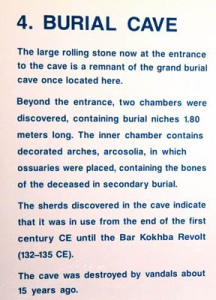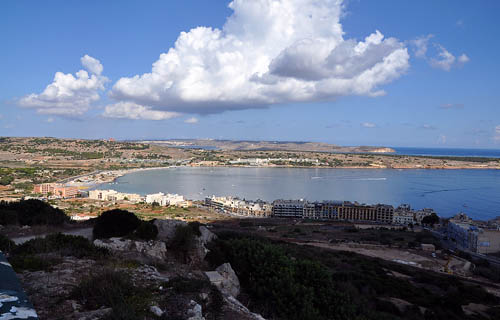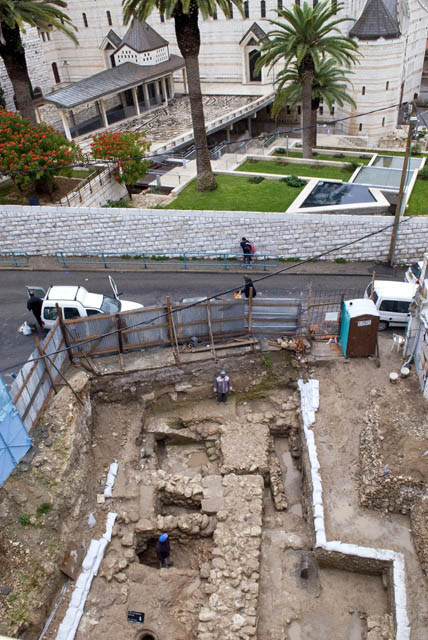The Midras Ruins (Horvat Midras) in Israel are part of the Adulam Grove Nature Reserve east of Hwy 38 between the Elah Valley and Beit Guvrin. According to the Parks department sign at the site, the ruins are part of an ancient settlement including caves, pits, and other installations. The Carta touring atlas says the area was continuously inhabited from the time of the Kings of Judah to the Roman period.
For several years I had wanted to visit the Midras Ruins. In August, 2008, I went there for the first time. It was hot, and the hour was late. Elizabeth and I looked for the burial cave with a rolling stone from the Roman period, but were not able to locate it. We spoke with some visitors from near Tel Aviv who had been crawling through the tunnels, but they were unable to help. Earlier this month Leon and I went to Midras and spent a lot of time searching for the burial cave. There are no signs pointing specifically to this burial site. As we searched the area we called a guide friend who told us we should go to the right of the entry. We tried that without success.
On another day our guide friend went with us. He said he had been there since the burial cave was restored. After we got to the site he called a friend who lives in the nearby village. He assured us that the cave was to the right of the entry. After more searching we noted that the older entry from the main road (Hwy 38) had been closed. Now the parking and entry is from the side road about a mile from the main road. Instead of the cave being to the right of the entry, it is to the left of the end of the trail. Here is the sign you need to look for.

Midras Ruins sign. Go toward Pyramid Tomb. Photo by Ferrell Jenkins.
Go toward the Pyramid Tomb. The burial cave is marked as number 4 on the left side of the trail. The sign at the cave indicates that it was in use from the first century B.C. until the Bar Kochba revolt (about A.D. 135). The site was vandalized about 15 years ago.

Midras Ruins Burial Cave.
It was getting dark by the time we located the tomb, but I had a good flash attachment with me that allowed some fairly good photos.

Midras Ruins Burial Cave 4. Photo by Ferrell Jenkins 2009.
I am not able to make out the graffiti above the tomb. Here is a closer view of the rolling stone.

Midras Ruins Burial Cave 4 with rolling stone. Photo by Ferrell Jenkins.
This tomb is supposed to have been restored. Compare the way it looks now with the way it looked before the vandalism. There are two sources that I know about.
Dr. Carl Rasmussen, Holy Land Photos, says,
In 1976 part of the cemetery was excavated. Several tombs were uncovered, including, in my estimation, THE BEST ROLLING STONE TOMB in the country. Unfortunately in the late 1990’s the tomb site was totally destroyed by vandals. BUT it has been reconstructed and is now visible in the Adullam Park!
Carl has six photos of the tomb here. Open a new browser and compare the tomb now with the photos he made earlier.
Todd Bolen, BiblePlaces Blog, has an excellent photo of the tomb before and after it was vandalized here. Here you may see the original photo with some restoration photos by A.D. Riddle. I think you will agree that the restoration is not very good.
Why is this tomb important enough that I would go to so much trouble to locate and photograph it? It is because this illustrates the type of tomb in which Jesus was buried.
And Joseph [from Arimathea] took the body and wrapped it in a clean linen shroud and laid it in his own new tomb, which he had cut in the rock. And he rolled a great stone to the entrance of the tomb and went away. (Matthew 27:59-60 ESV)
Why would anyone want to vandalize this tomb? Probably the same reason!
Several other tombs with a rolling stone are known in the Bible lands.












You must be logged in to post a comment.